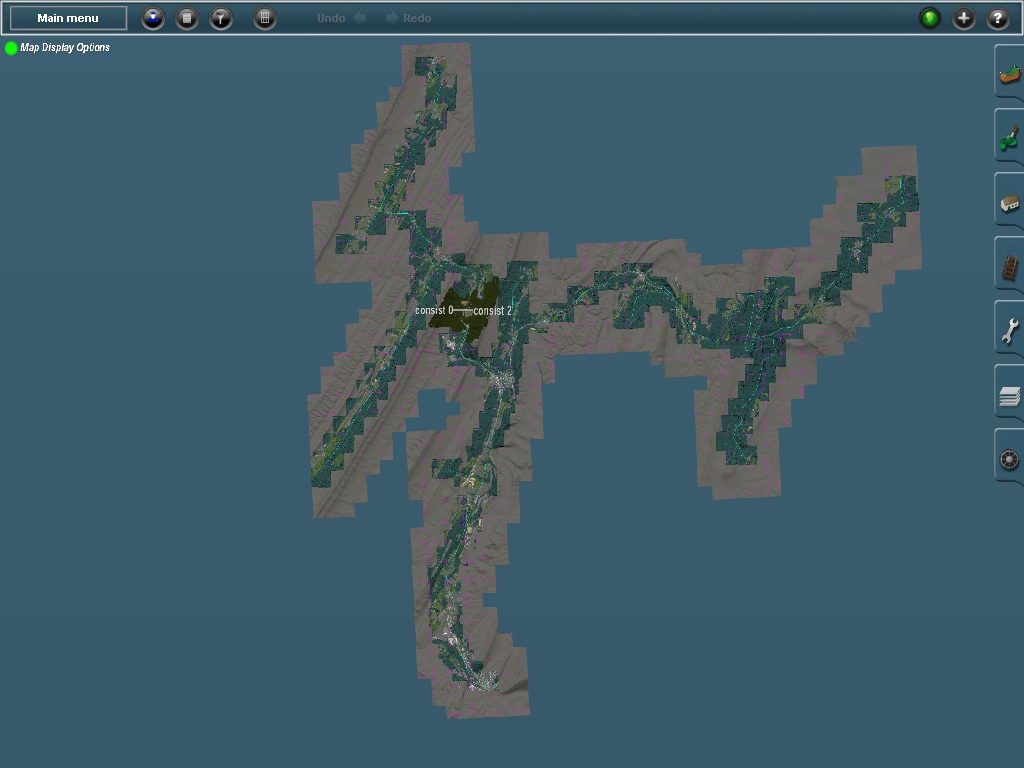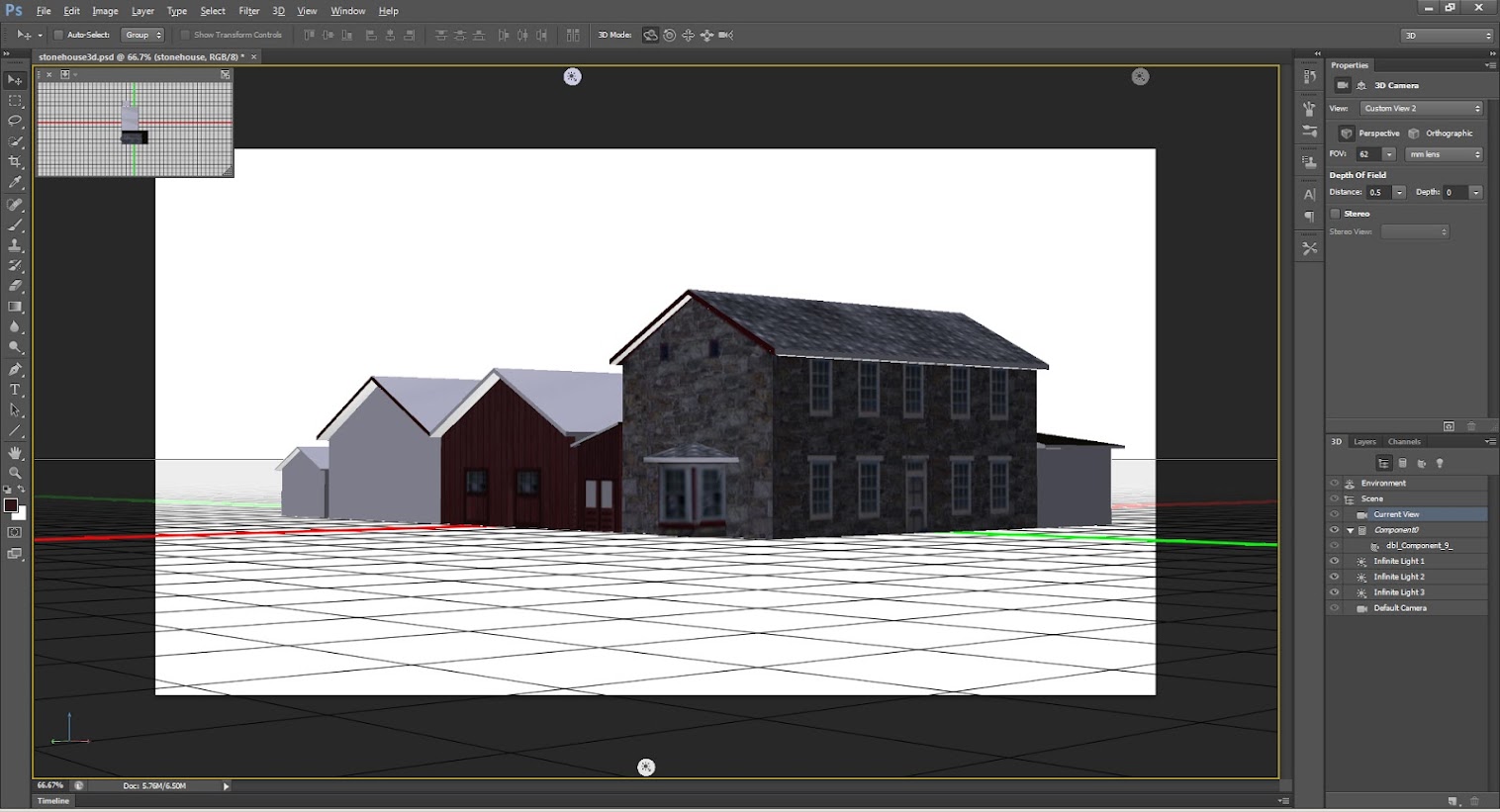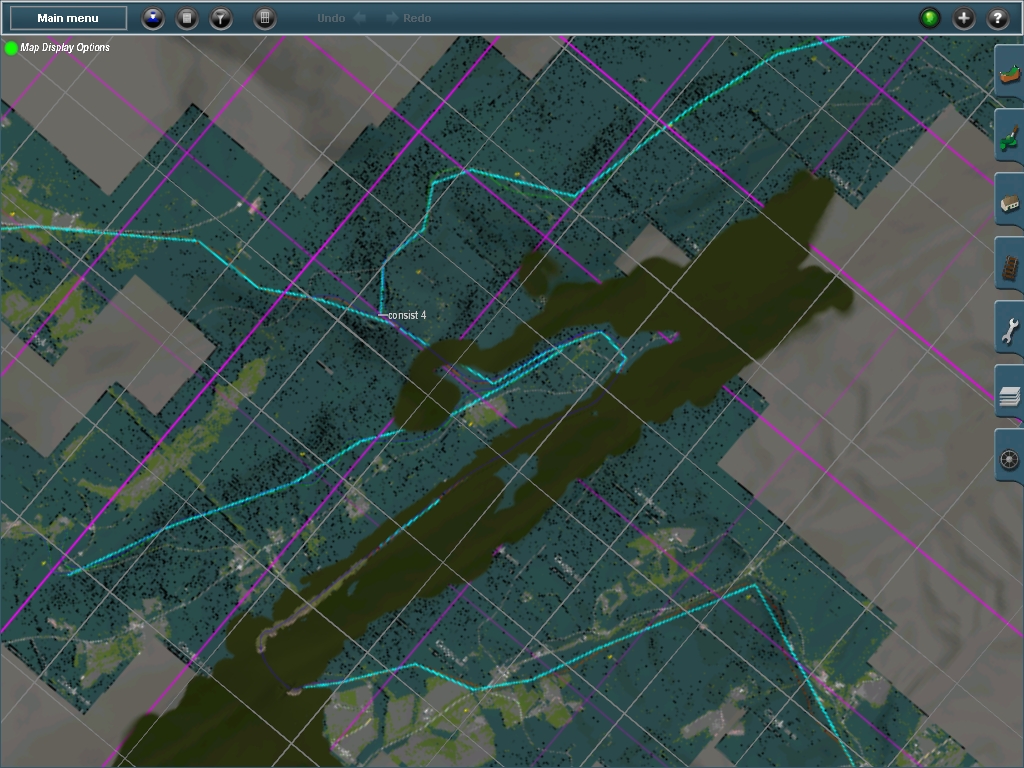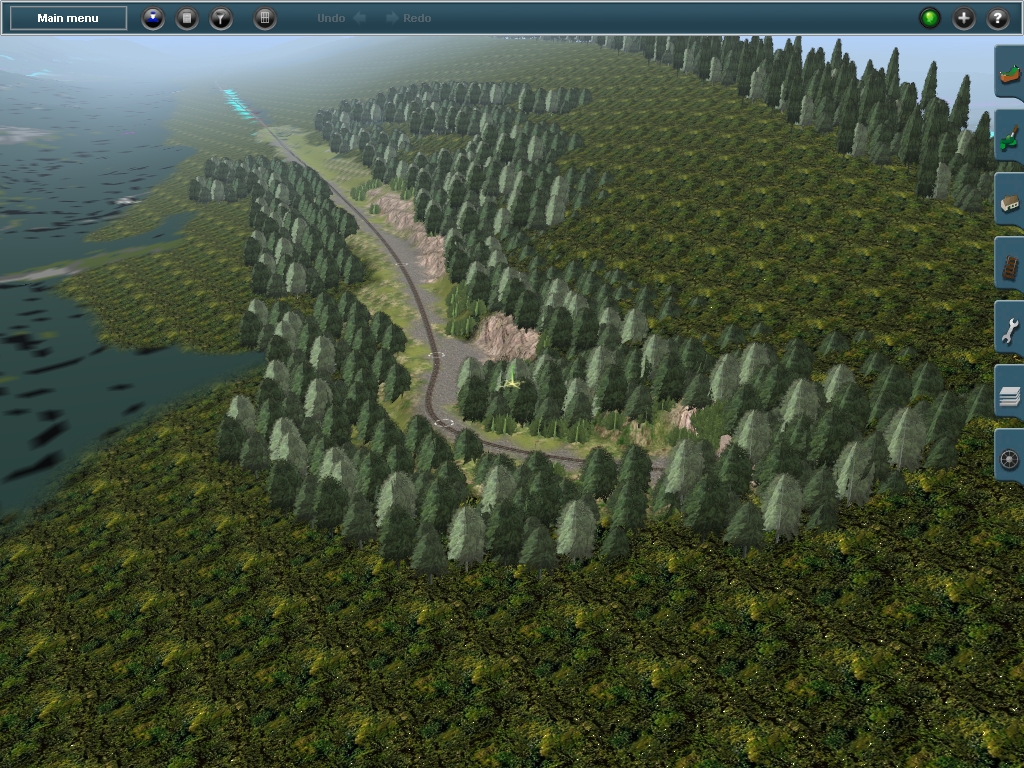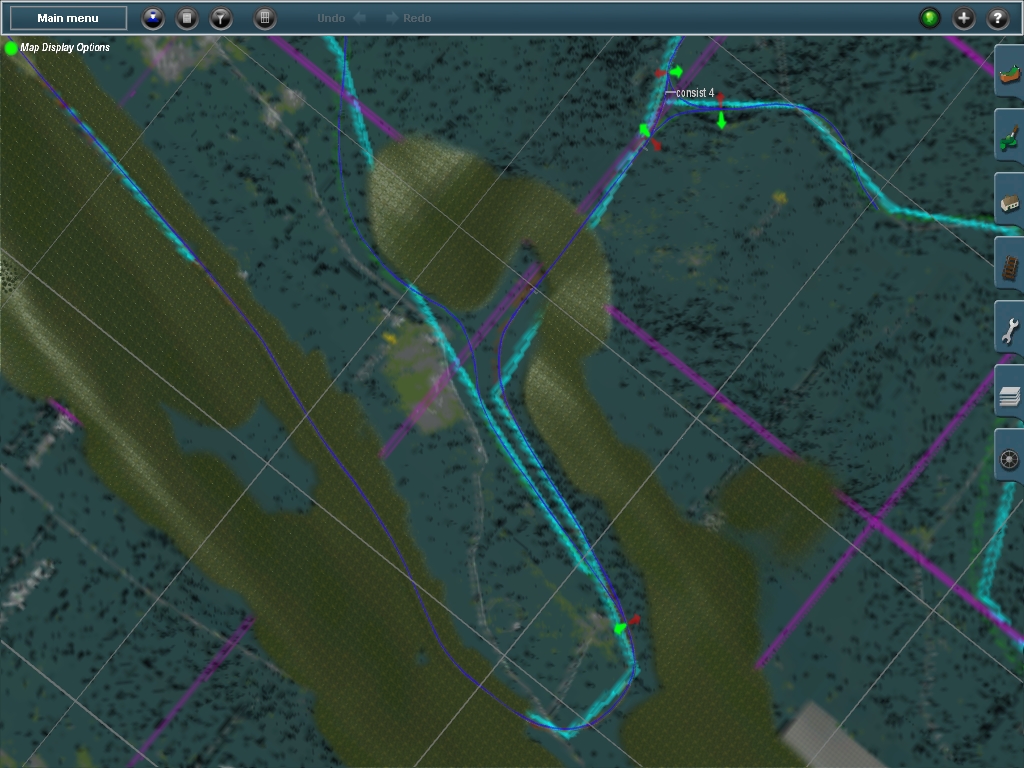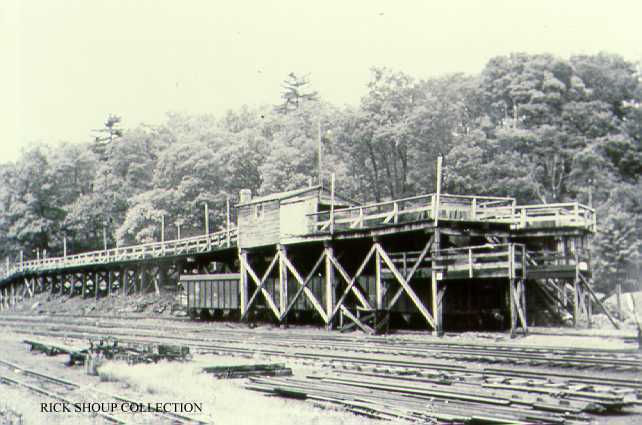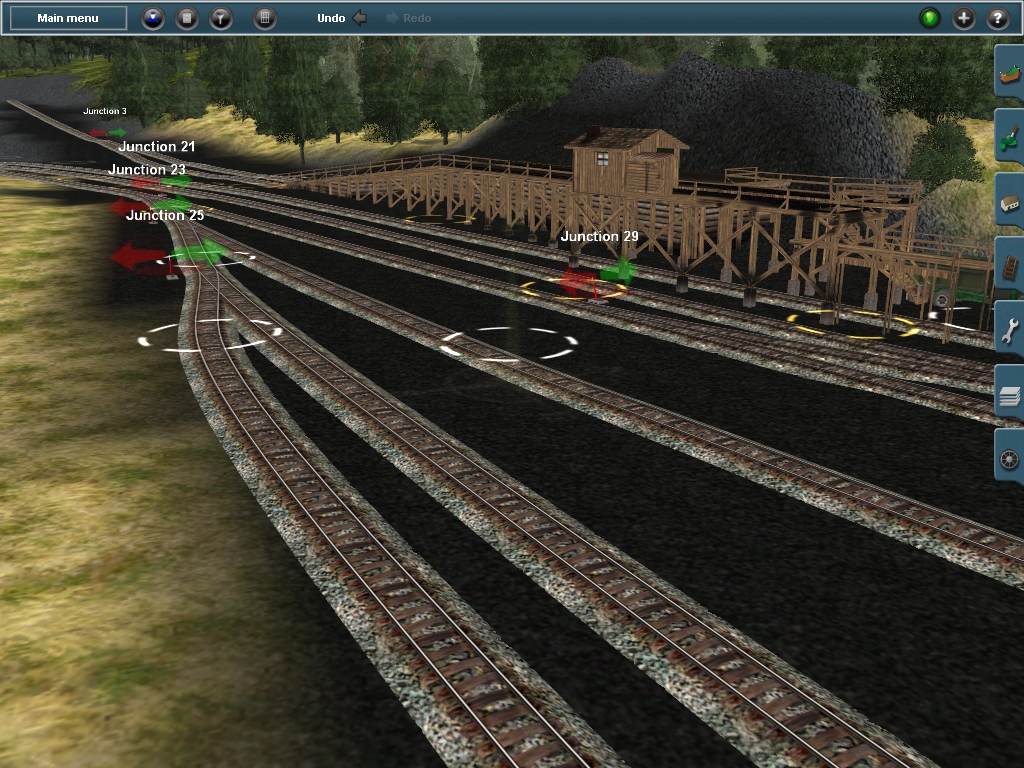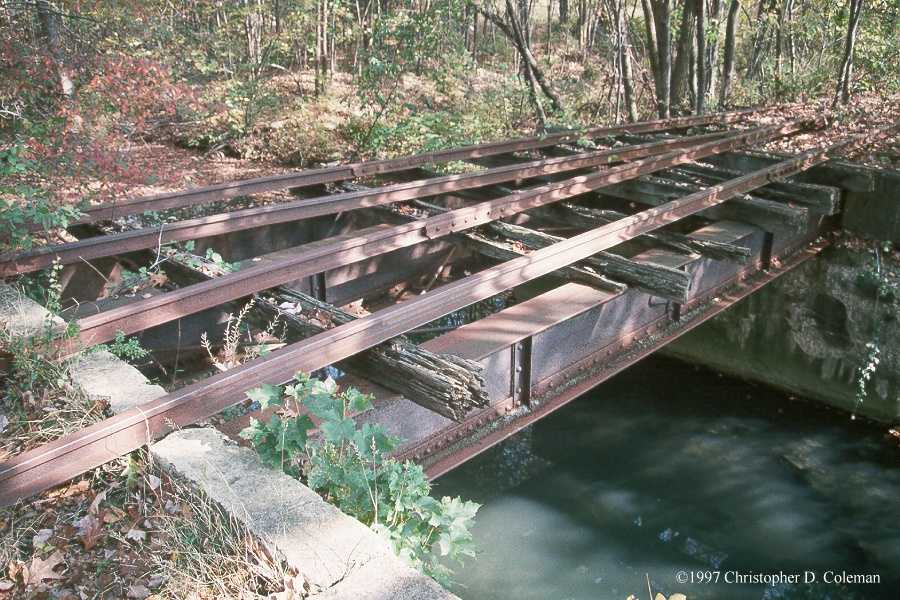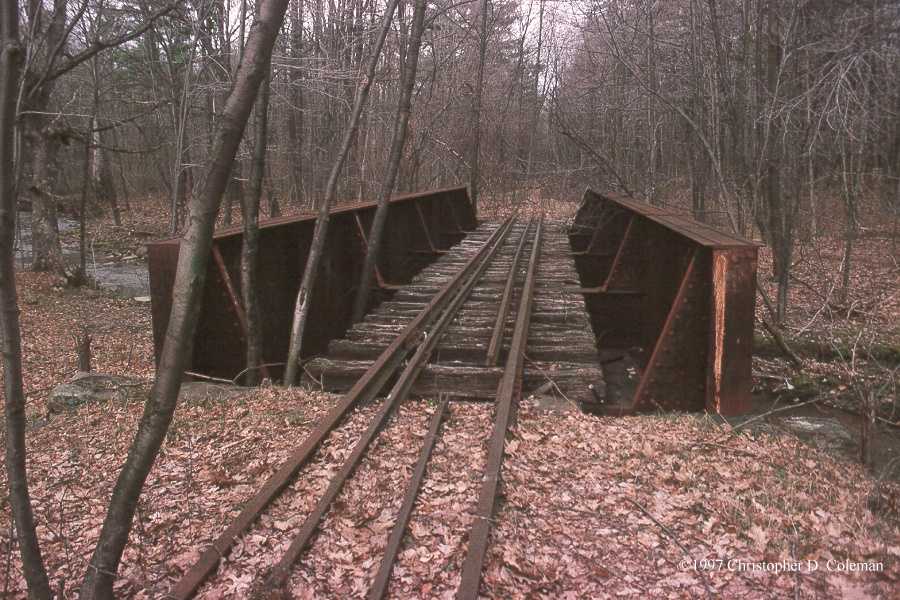Kimmel switch, Sidling Hill tunnel west portal
I spy ... wit' my wittel' eye ... a curved turnout
http://www.spikesys.com/EBT/Tour/shtunnel.html
Elevation: 1210'
Gradient: 1.90%




Coles curve to Wrays Hill tunnel

What do you notice in these screenshots ?
No more blinding Aqua HOG #67 texture ... It's fired !
SG track (will be replaced ASAP)
This tunnel was bored between winter 1873 and September 1874 by B. J. McGrann and Company of Lancaster. It passes under Morland's Gap, a low point on Sideling Hill, for which it took its original name. This route was favored over the alternative route through Sideling Hill Gap, which would have had to climb the steep southeast side of Broad Top Mountain. Sideling Hill, which runs half way through Pennsylvania, was the single largest physical obstacle to the line. At this point it marks the change in watershed between Three Springs Creek and Roaring Run (flows to Sideling Hill Creek then Aughwick Creek). The tunnel headers met on September 12, 1874.
The tunnel as built was 836' long and is curved at either end which was a frequent operational hazard. After the purchase of
the first mikado #12 in 1911, she derailed her pilot truck in the tunnel on her maiden trip up the mountain. The truck then caught on the Kimmel switch and derailed the entire loco. Wind blowing through the tunnel had caused water leaking from the roof to freeze up on the track. As a result the tunnel was equipped with large wooden doors on the north portal and watchman shanty's at either end for men to man the doors.
The north shanty was a batten board structure on a concrete pad and is seen as a red building with white trim. It was equipped with a stove connected to a masonry chimney and had an asphalt shingle roof. A smaller lean to was added to the north side of the building. The controller for the power door was located on the tell tale post just outside the door of the shanty. The south shanty was a batten board structure recovered with simulated brick asphalt siding, like that on Coles Tank and Rockhill Sand House. The structure had dark painted trim and sat on four wood piles. It has a stove connected to a metal chimney. Both ends of the tunnel were equipped with tell-tales, which consisted of metal bars hanging from a wire strung across the track about a hundred yards from the portal. The tell-tales would warn brakemen atop the cars of the coming tunnel and also hit any over height cars or loads.
The north portal was later rebuilt with concrete, shortening the tunnel to 830'. The north portal was likely rebuilt about 1919 after the same was done at Wrays Hill after a collapse there. It was likely at this rebuild that the north portal received a roll up door. It would have been just two years after the same treatment was given to the Rockhill Roundhouse. At some point a motorized door was added a few feet outside the original manual roll up door. In 1948 the doors were automated to save money on the tunnel watchmen. The motorized door was connected to remote actuators on poles a few hundred feet from either portal. A ring hung on a chain from either actuator. The ring before the tunnel was pulled by the head end crew to open the door and the ring after the tunnel by the caboose crew to close it. Two converted traffic lights on poles just outside either portal showed the status of the door. The lights had three green lenses, and during the winter when the doors were in use all three lights would show green when the doors were open. The signal at the north portal was mounted on the engineer side telltale post, which was also a telegraph pole and the pole with the manual door controller. The south traffic light was mounted on the engineers side telltale post. (EBT 166)
On at least one occasion the head end crew pulled both rings at one of the tunnels, causing the door to come down on the caboose and be torn off. As a result of this sort of incident the practice of automating the doors was ended by 1952 in favor of a watchman.
At the end of operations the inner manual door was left closed and the motorized door was left open. The tunnel is still open, but has suffered many rockfalls, especially at the south end. The close manual door rusted to pieces over the years. About 2000, the outer motorized door and its wood frame toppled outward from the portal onto the track. The manual door later fell directly down onto the track. Both shanty's, actuators poles and signal poles are gone. The north shanty is reported to have been burned, but the foundation is still visible. The south shanty is also gone, though the four posts on which it rested can still be found. Both portals can be accessed by walking the line from the PA 994 EBT crossing on the respective side of Sideling Hill. DO NOT ENTER THE TUNNEL. It contains debris, standing water and various unfriendly wildlife.

